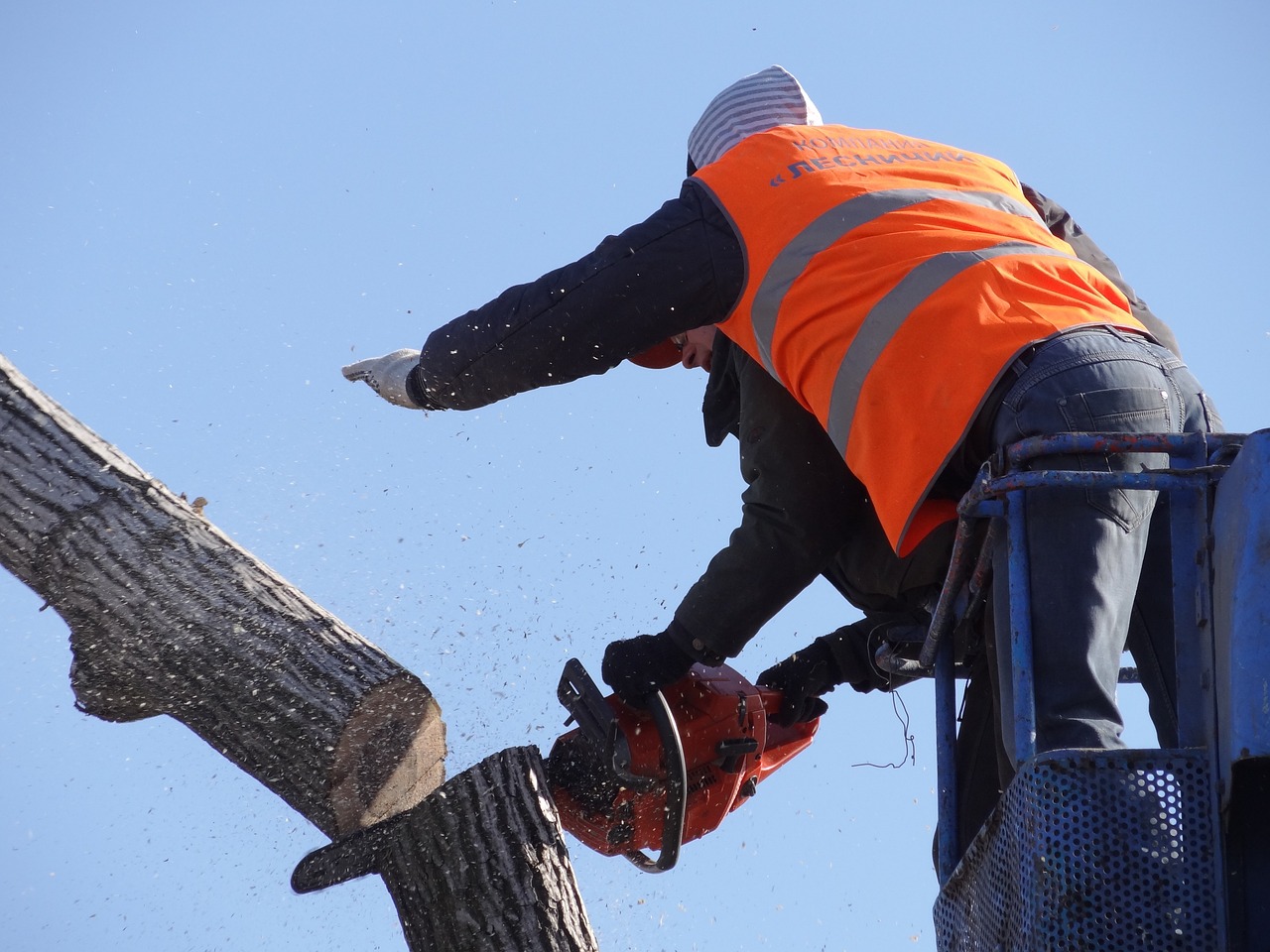Cutting down a tree is a task that should never be taken lightly. Whether you need to remove a tree for safety reasons, to clear space for construction, or simply to enhance your property’s aesthetics, it’s crucial to approach this task with the utmost care and respect for the environment. In this comprehensive guide, we will walk you through the process of safely and efficiently cutting down a tree. We’ll cover everything from tree assessment and planning to the actual cutting techniques and post-cutting steps. By the end of this article, you’ll have a thorough understanding of how to cut down a tree while minimizing risks and environmental impact.
Tree Assessment and Planning
Before you even think about picking up a chainsaw, it’s essential to assess the tree and develop a clear plan for the removal process. Proper assessment and planning will help you determine the tree’s health, identify potential hazards, and choose the right tools and techniques for the job.
Determine Tree Health
The first step in tree removal is assessing the tree’s overall health. A healthy tree is often better left undisturbed, so it’s essential to identify any signs of disease, decay, or structural issues that may make it a safety hazard. Look for the following indicators:
- Fungal growth or rot on the trunk or branches
- Dead or dying branches
- Cracks or splits in the trunk
- Leaning or unstable posture
- Excessive insect infestations
If you notice any of these signs, it’s a good idea to consult with an arborist or tree removal professional for a more detailed assessment.
Check Local Regulations
Before you proceed with tree removal, check your local regulations and ordinances regarding tree cutting. Some areas have strict rules and permit requirements for tree removal, especially if the tree is of a certain size or species. Failure to comply with these regulations can result in fines and legal consequences.
Identify Potential Hazards
Assess the area around the tree to identify any potential hazards. Look for structures, power lines, nearby trees, and any obstacles that could be damaged during the tree removal process. It’s crucial to plan your cutting strategy in a way that minimizes risks to people and property.
Plan Your Escape Routes
Safety is paramount when cutting down a tree. Always plan two escape routes before you start cutting. These routes should be clear of obstacles and allow you to quickly move away from the falling tree in case anything goes wrong.
Gathering the Right Tools and Safety Gear
Now that you have assessed the tree and planned your approach, it’s time to gather the necessary tools and safety gear. Proper equipment is essential to ensure both your safety and the efficiency of the tree removal process.
Essential Tools
Here are the basic tools you’ll need for cutting down a tree:
- Chainsaw: Choose an appropriate chainsaw with a sharp chain. The size of the chainsaw should match the tree’s diameter.
- Wedges: Wedges help control the direction of the tree’s fall. Plastic or wooden wedges are commonly used.
- Axe or splitting maul: These tools can be handy for splitting wood and freeing the chainsaw if it gets stuck.
- Rope: Quality rope is essential for securing branches and controlling the tree’s fall.
- Ladder or climbing equipment: If necessary, you may need a ladder or climbing gear to reach high branches.
Safety Gear Maintenance
Ensure that all your safety gear and tools are in good working condition. Regularly inspect your chainsaw and other equipment for any damage or wear. A well-maintained chainsaw is safer and more efficient than one that is in poor condition.
First Aid Kit
Always have a first aid kit on hand in case of accidents or injuries. It should include basic supplies such as bandages, antiseptic wipes, adhesive tape, and sterile gauze pads.
The Cutting Process
With your tree assessment, planning, and tools in place, it’s time to delve into the actual cutting process. This section will guide you through the steps of cutting down a tree safely and efficiently.
Make the Felling Cut
The felling cut is the primary cut that determines the direction in which the tree will fall. Follow these steps to make a proper felling cut:
a. Stand on the side of the tree that faces the desired fall direction. b. Make a horizontal cut (the undercut) about one-third of the way through the tree’s diameter. This cut should be low on the trunk and positioned slightly above ground level. c. Next, make a second cut (the top cut) above and slightly ahead of the undercut. This cut should meet the undercut, forming a notch. d. The notch should resemble a 70-80-degree angle, with the apex pointing toward the desired fall direction. This notch guides the tree’s fall in the intended direction.
Create the Back Cut
After making the notch, it’s time to create the back cut, which will release the tree from the stump. Follow these steps for the back cut:
a. Stand on the opposite side of the tree from the notch. b. Make a horizontal cut slightly above the bottom of the notch, aiming to meet the notch’s apex. c. The back cut should be slightly above the horizontal line of the notch, leaving a small ledge or “hinge” of uncut wood. This hinge controls the tree’s fall and ensures it falls in the desired direction. d. As you make the back cut, be prepared to move quickly to one of your predetermined escape routes as the tree begins to fall.
Using Wedges
If the tree doesn’t start to fall in the desired direction, you can use wedges to help steer it. Insert the wedges into the back cut to guide the tree’s fall in the intended direction. This is especially important if the tree leans in a different direction or if there are obstacles nearby.
Controlled Falling
As the tree begins to fall, maintain a safe distance and continue to watch its movement closely. Be prepared to move quickly to your escape route if necessary. Keep in mind that trees can sometimes shift or kick back unexpectedly as they fall, so stay vigilant.
After the Tree Falls
Once the tree has been successfully felled, there are several important steps to follow to ensure the safety of yourself and others, as well as to make the most of the wood.
Limbing
Limbing involves removing the branches from the fallen tree. Start at the base of the tree and work your way up. Use your chainsaw to cut the branches off cleanly and efficiently. Be cautious of tension in the branches, as they can spring back unexpectedly.
Bucking
Bucking is the process of cutting the tree trunk into manageable sections, known as logs. Determine the desired length for the logs and use your chainsaw to make even cuts. Be aware of any potential pinching situations where the chainsaw blade might become stuck.
Stump Removal
Decide whether you want to remove the stump entirely or leave it in place. Stump removal can be a challenging task and may require specialized equipment like a stump grinder. If you choose to remove the stump, consult with a professional or rent the necessary equipment.
Cleanup and Wood Disposal
Properly dispose of the tree debris, including branches and smaller limbs. You can use the wood for firewood, mulch, or other purposes, depending on the tree species and your needs. Consider recycling or repurposing the wood to minimize waste.
Section 5: Safety Tips and Best Practices
Throughout the tree cutting process, safety should be your top priority. Here are some additional safety tips and best practices to keep in mind:
Always Have a Buddy
Never work alone when cutting down a tree. Have a trusted friend or family member with you to assist, keep an eye on the tree’s movement, and provide help in case of an emergency.
Maintain Proper Distance
Maintain a safe distance from the tree when cutting and while it’s falling. A good rule of thumb is to stay at least twice the tree’s height away from it during the cutting process.
Be Mindful of Kickback
Chainsaws can experience kickback, which occurs when the bar and chain suddenly move backward towards the operator. Always maintain a firm grip on the chainsaw and be prepared for kickback by standing to the side of the cutting path.
Check Weather Conditions
Avoid cutting trees during adverse weather conditions such as high winds, rain, or snow. These conditions can make the cutting process more dangerous and less predictable.
Wear Proper PPE
Always wear the recommended personal protective equipment (PPE) to protect yourself from potential injuries. This includes a helmet, face shield or safety goggles, ear protection, chainsaw-resistant chaps or pants, gloves, steel-toed boots, and high-visibility clothing.
Stay Hydrated and Take Breaks
Tree cutting can be physically demanding work. Stay hydrated by drinking plenty of water, and take regular breaks to rest and recharge.
Conclusion
Cutting down a tree is a task that should be approached with caution, planning, and respect for safety and the environment. By following the steps outlined in this comprehensive guide, you can safely and efficiently remove a tree when necessary. Always prioritize safety, use the right tools, and consider consulting with a professional if you have any doubts about your ability to safely carry out the task. Remember that proper tree cutting not only ensures safety but also allows you to make the most of the wood and minimize environmental impact.










